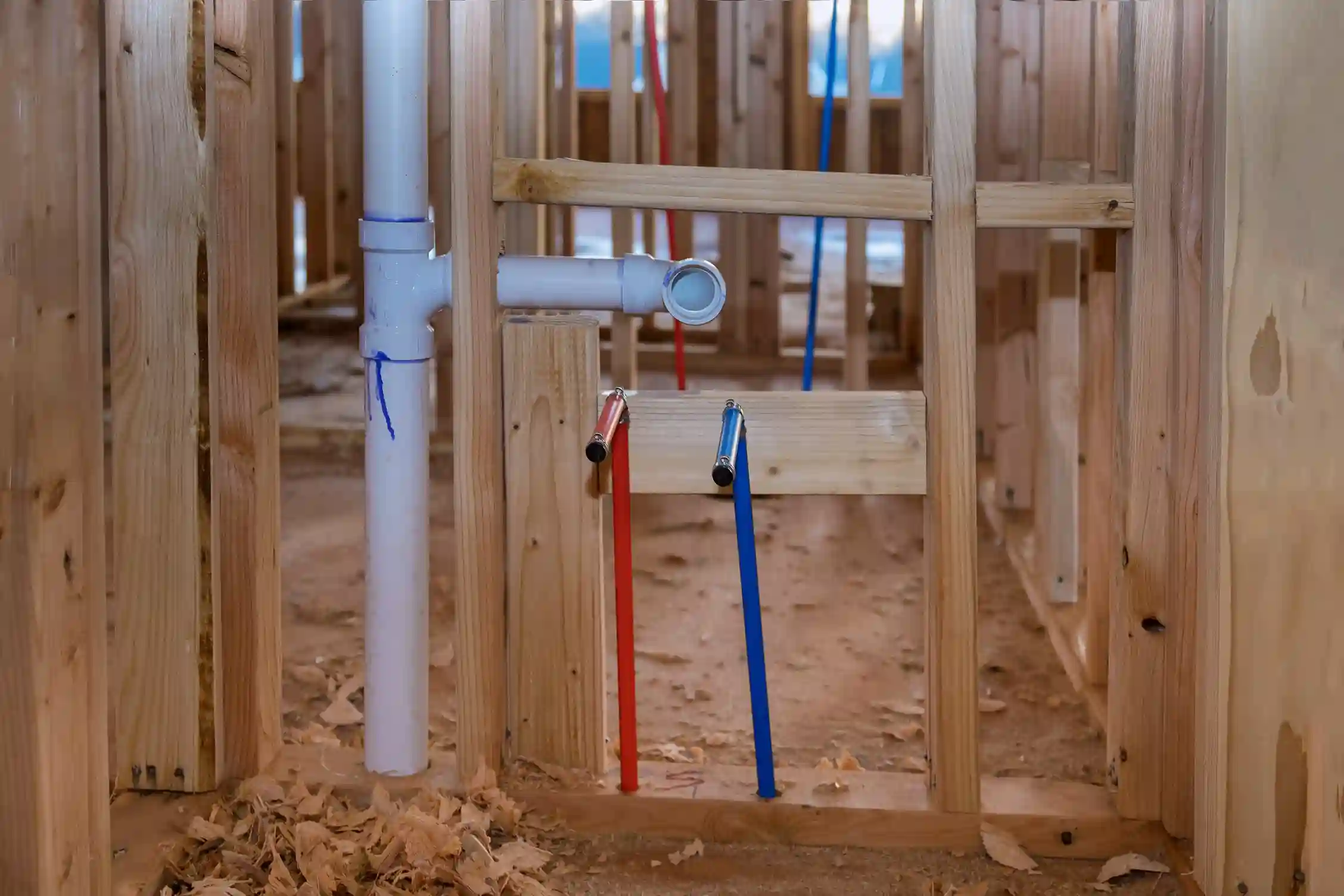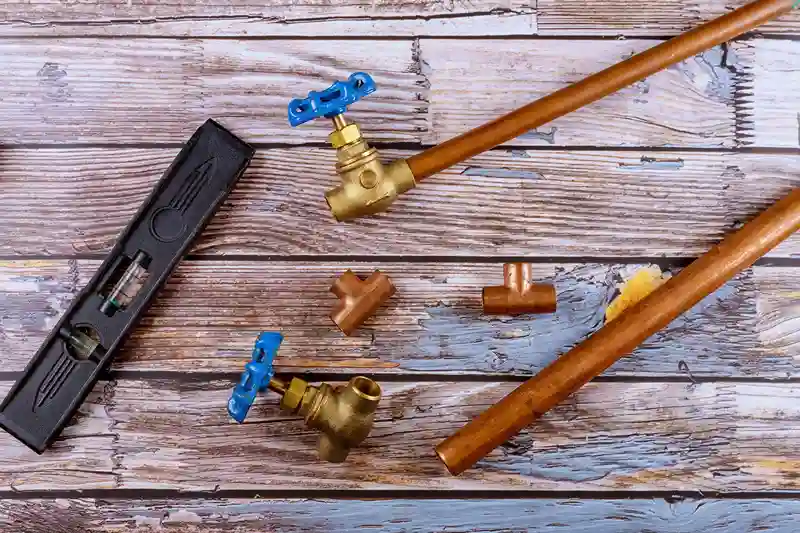How to Choose Between PEX and Copper for Your Home’s Water Line Installation
If you’re replacing or installing new water lines, you’re probably stuck on one big question: PEX vs Copper, which is better?
Both materials have been used in homes for years, but which one is better? The answer isn’t that simple. Some swear by copper, saying it lasts a lifetime. Others prefer PEX for its flexibility and lower cost.
But here’s the thing, the “best” option depends on more than just the pipe itself. It’s about your home, your water, and your long-term budget. Before making a decision, it helps to know the real differences between copper vs plastic water pipes.
Types of Water Supply Pipes
PEX Pipes

PEX (cross-linked polyethylene) is the flexible option and it’s changing how water lines are installed. Unlike rigid pipes, PEX pipes can bend and weave through walls and floors with fewer connections. It’s lightweight, easy to cut, and doesn’t require soldering.
If you’re replacing old plumbing or running new lines through walls and tight spaces, PEX pipes can save time and labor costs. PEX is less likely to burst in cold weather. It’s a popular choice in colder regions because it expands slightly when frozen. It’s commonly used for residential plumbing, radiant floor heating, and even some outdoor applications!
Copper Pipes

Copper has been the go-to plumbing material for decades, and for good reason. If you’ve ever seen an old house with original pipes still intact, there’s a good chance they’re copper.
It’s naturally resistant to bacteria, doesn’t break down in sunlight, and can handle high temperatures without weakening. If you want a water supply pipe that could last 50 years or more, copper pipes are a solid choice.
PEX vs Copper
Durability & Lifespan
If we’re talking long-term strength, copper is the undeniable winner at least under normal conditions. It can last 50+ years and won’t break down in the sun. But it’s not invincible. Freezing temperatures and acidic water can shorten its lifespan.
PEX pipes can last 25–40 years, but their durability depends on where they’re installed. If buried underground or exposed to sunlight, they need added protection to last as long as copper.
Installation & Maintenance
PEX is way easier to install. It cuts like plastic tubing and connects with simple crimp or push-to-connect fittings. No torch, no soldering, no hours spent in tight crawl spaces. This makes it great for homeowners who want a quicker and more affordable installation cost.
Copper, on the other hand, needs expert skill. Pipes need to be cut, soldered, and properly sealed. But once it’s installed, it’s rock solid and less likely to get punctured or chewed by rodents.
Cost Comparison
PEX is the more budget-friendly option. The material itself is cheaper and because installation is easier, labor costs are lower too. Homeowners can expect to pay 20% to 40% more when installing copper pipes over PEX. On average, PEX water pipes cost 50 cents to $2 per linear foot, while copper costs closer to $2 to $8 per linear foot.
Copper is expensive from the start. Both the pipes and the labor will cost more. But in the long run, its durability might make up for it. If you’re planning to stay in your home for decades, it could be worth the investment.
Water Quality & Safety
Copper is naturally antimicrobial, meaning bacteria don’t grow as easily inside the pipes. That’s why some people prefer it for drinking water. But in areas with acidic water, copper can leach into the supply and give off a metallic taste. PEX doesn’t have that issue, but some homeowners worry about plastic leaching over time.
Pros and Cons of PEX vs Copper
Pros and Cons of PEX Pipes
Pros | Cons |
Flexible and easy to install | Can’t be exposed to sunlight long-term |
More affordable | May affect water taste temporarily |
Fewer joints = fewer leak points | Not as strong for underground use |
Expands in freezing temperatures | Can be chewed by rodents if not protected |
PEX is a great choice if you want a budget-friendly and easy-to-install pipe, but it’s not always the best for outdoor or underground projects.
Pros and Cons of Copper Pipes
Pros | Cons |
Lasts 50+ years | Expensive upfront |
Naturally resists bacteria | Needs professional installation |
Handles extreme heat and cold | Can corrode in acidic water |
Strong for underground use | More prone to pinhole leaks in some conditions |
Copper is the best pipe for underground water supply if durability is at the top of your list. But if budget and flexibility matter more, PEX could be the better choice.
Which Pipe Should You Choose?
There’s no right and quick answer. It can depend on your home, budget, and location. If you want a quick, affordable installation, PEX is a great option. But if long-term durability is your top priority, copper is worth considering.
Need expert guidance? Call Wally Blanton at (847) 345-8185, we can help you find the best solution for your water lines.
FAQs About PEX vs Copper Pipes
Is PEX better than copper for water lines?
It depends on your needs. PEX is more affordable, easier to install, and resistant to freezing. Copper lasts longer, handles high heat well, and is more durable for underground or outdoor use. Both have pros and cons, so the best choice depends on your home and budget.
Can PEX be used for outdoor water lines?
Yes, but with limitations. PEX must be buried or protected from direct sunlight because UV exposure can weaken it. It also needs insulation in cold climates to prevent freezing.
Are copper pipes safe for drinking water?
Yes, copper is naturally antimicrobial and resists bacterial growth. In areas with acidic water, copper can corrode and leach into the supply, which may cause a metallic taste or health concerns.
Can I use PEX for hot water lines?
Yes, PEX is rated for hot water use and can handle temperatures up to 200°F. It’s commonly used in residential hot water systems and radiant floor heating.
Can PEX be used for outdoor water lines?
Yes, PEX is increasingly used for underground water lines because it resists corrosion and is easier to install than copper. But it should be sleeved or buried below the frost line to prevent damage.
